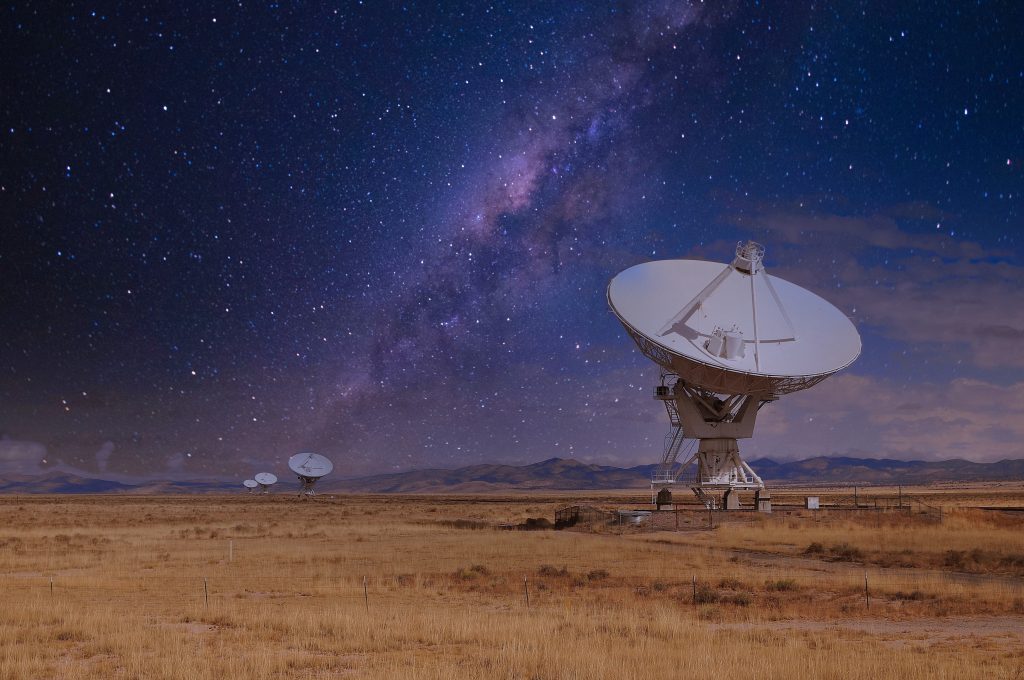
Galaxies Far, Far, Away: Science Behind Science Fiction
Hi, I’m Marley, the astronomer here at the Space Centre. Our theme for the month of May is the science behind science fiction. I wanted to take this opportunity to talk about my favourite science fiction movie of call time: Contact. Some spoilers will follow!
Based on the 1985 novel of the same name by Carl Sagan, the movie follows Dr. Ellie Arroway and her colleagues as she discovers a repeating signal originating from the Vega system, and the events that follow. Ellie is a radio astronomer, and she works for a program called the Search for Extraterrestrial Intelligence, or SETI, at Arecibo until funding is pulled. She ends up continuing her search for life beyond our solar system at the Very Large Array (VLA) with funding from a private donor. It is at the VLA where she discovers this repeating signal, which once decoded is actually a message containing plans on how to build a machine. I’m not going to go further into the story, but at some point, wormholes are involved.
What I love about this movie is that it involves real science throughout, and situations that we see in science today. While fiction, it is reasonable fiction, and nothing feels too out of reach. There are three cases where science fiction feels real: the cases of radio astronomy, SETI, and Dr. Ellie Arroway herself.
Radio Astronomy
Radio waves are not just used in your car radio. These waves can come from energetic objects and processes in the universe, like pulsars, but also from cold, dark objects like interstellar molecular clouds. A major advantage of radio astronomy is that it can be done in sunlight, with clouds, and even with rain. The weather will not affect observations, and for the most part, neither will the atmosphere. Earth’s atmosphere protects us, and by doing so absorbs most of the light coming from space across the electromagnetic spectrum. Some wavelengths of light can make it to the surface, like visible light and some parts of the radio section of the spectrum. These sections are known as atmospheric windows. Since there is a window, many radio telescopes are on the ground. And it’s a good thing they are since radio telescopes are typically very large.
The wavelength of a radio wave ranges from as small as 1cm to as large as 3km. A large telescope is necessary to collect those larger wavelengths and the larger the telescope the better of an image we get. Radio waves are how we send information to and from spacecraft. The Curiosity rover on Mars communicates to us on Earth through the Deep Space Network – a collection of radio antenna around the world. If an alien civilization were to send us a message, a radio signal would be the best way to do it.
Search for Extraterrestrial Intelligence (SETI)
The place where Ellie starts her journey is a real institute in our world. The question ‘are we alone?’ has always been something human beings have wondered about. Because of this, SETI as an idea existed in some form or another. Frank Drake of the Drake Equation held a conference in 1961, inviting other astronomers and other scientists for what may have been the first serious conference on SETI. It was at this conference that the Drake Equation, the formula that estimates the number of potential civilizations in our galaxy, was formalized.
In the late 1960s efforts began to get NASA involved in SETI, but the $10 billion USD cost of the proposed project brought the effort to a standstill until 1975 when NASA started to fund some design studies due to changes in the relevant science and technology needed for SETI. At this point SETI as a concept received a small amount of funding from NASA. While there were problems with keeping funding for SETI at NASA, as it was at times deemed a waste of taxpayer dollars, the program continued throughout the 80s. At the same time, there were several private SETI programs in operation, both in the United States and internationally. The SETI Institute was made a non-profit in 1984, with operations beginning on February 1st, 1985. Funding for NASA’s SETI ended in September 1993, when the United States House and Senate approved an amendment that ended the program. Several scientists that were involved with NASA’s program moved to the SETI Institute and vowed to continue their work using private funding – similarly to what happens to Ellie in the story.
Dr. Ellie Arroway
Dr. Ellie Arroway may be a fictional scientist, but she and her science were inspired by a very real one: Dr. Jill Tarter, a radio astronomer known for her work in astrobiology and SETI. She completed her PhD in astronomy from the University of California, Berkley in 1975, and spent 35 years in the SETI field before retiring in 2012.
In the 35 years of work she did in SETI, Tarter was involved in many projects. Project Cyclops, a NASA project from 1971 that investigated how SETI should work, inspired her to get involved in the research. She became a project scientist for NASA’s High Resolution Microwave Survey (HRMS) in 1992 and 1993. The HRMS was a project that involved scanning ten million different frequencies using radio telescopes in order to find a signal from extraterrestrial intelligence. This project was killed by the same federal government amendment that removed funding from NASA’s SETI program.
HRMS continued on in the work of Project Phoenix, a program funded privately by the non-profit SETI Institute, and Tarter became the director of the project at this time. Observations began in early 1995. It began observations in Australia at the Parkes 210-foot radio telescope, before moving north at the National Radio Astronomy Observatory in Green Bank, West Virginia. In 1998 the project moved to Arecibo, where it remained until 2004 when the project came to an end.
Project Phoenix was different in that it did not scan the whole sky, unlike projects that came before it. Instead, it looked in the vicinity of close Sun-like stars. It looked at about 800 individual star systems, all within 200 light years of our own. Unlike Ellie Arroway, Jill Tarter did not listen to these signals. Millions of radio channels were monitored by Phoenix simultaneously, so the ‘listening’ was done by computers. If an interesting signal was detected, scientists were notified.
Ultimately, no signals from extraterrestrial life were found, though the SETI Institute continues to develop research projects to help us find out if there is life out there, and where we should look.
Check out….
Time
Activity
120+ mins
The Science in Science Fiction
Discover more about the science in popular science fiction tv and films. Find out if your favourite science fiction show was analyzed by SETI planetary astronomer Franck Marchis on SETI’s Grudge Report.
Read this short article about the best science fiction books
Watch this short interview about Contact’s wormhole and then read Contact (or watch the film).
Ask yourself: What is your favourite science fiction book, show or film?
60 mins
Radio Astronomy
Radio astronomy is an important tool in the search for life beyond our solar system. Find out more about radio astronomy with these activities.
Send a Signal to the Spacecraft! Try this online game where you can learn about NASAs Deep Space Network (DSN) and how we communicate with faraway spacecraft.
Read about ALMA, the Atacama Large Millimeter Array, a group of 66 radio telescopes that work together as a single telescope and take a virtual tour.
Help scientists analyze data with the Zooinverse project Radio Galaxy Zoo: LOFAR
Ask yourself: What do you think would be one of the challenges with being a radio astronomer?
30 min
Say Hi to ET?
How to communicate with aliens is a big question (and one addressed in another film, Arrival). Discover more about some of the questions scientists are asking about communicating with inhabitants of alien worlds.
Read this short article from the Smithsonian Magazine, The Science of Aliens, Part 5: How Would They Communicate?
Read this short blog by Dirk Schulze-Makuch, professor for planetary habitability and astrobiology, about the pros and cons of sending an interstellar message to the TRAPPIST-1 system.
TRAPPIST-1 is a pretty strange name for a solar system. Read about how exoplanets (and their solar systems) get their names and name your own exoplanet. What would your planet look like? What kind of life (if any) exists there?
Ask yourself: How do you think you would react to news of intelligent life beyond our solar system?
60+ min
Meet a Scientist
Scientist Jill Tartar is a trailblazer in the search for extraterrestrial intelligence. Find out more about some of the scientists and their work in this exciting field.
Watch an episode from SETI Talks, a monthly public lecture series. Each lecture showcases research that is relevant to astrobiology from scientists, authors, and those from within the SETI Institute.
Check out some of the research projects and the scientists working with the Carl Sagan Center for Research (SETI Institute).
Read more about astrobiology on our blog.
Ask yourself: If you were a scientist which area of astrobiology would you focus on?

